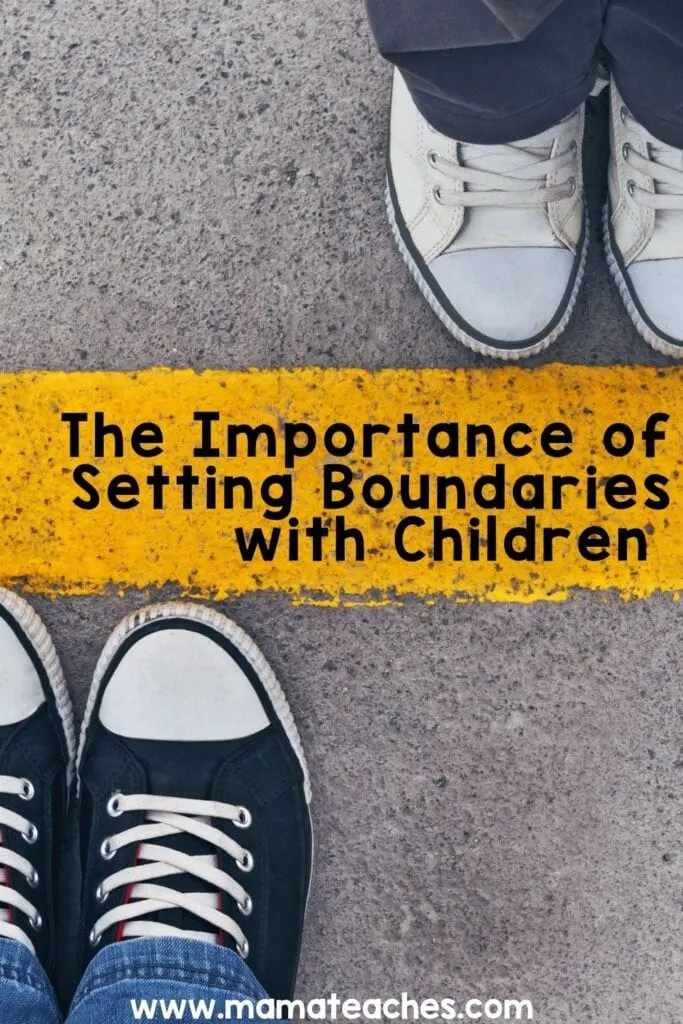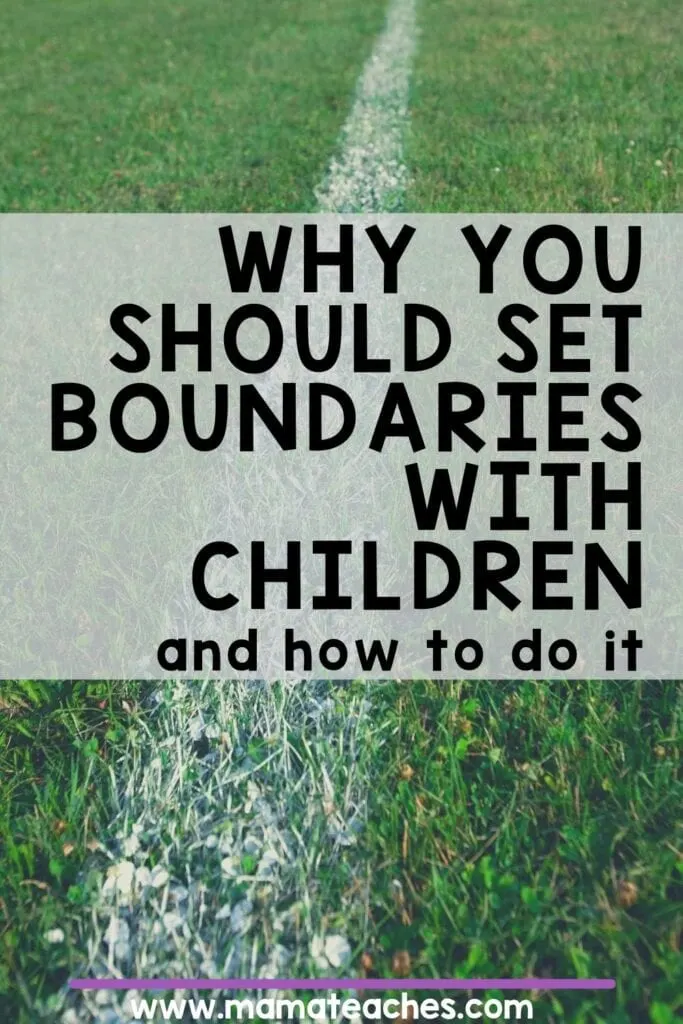You want to do what’s best for your kids.
You also want to make them happy.
Even though it seems counter-intuitive, that means setting boundaries.

This article contains affiliate links to things that you might like.
Importance of Boundaries
Babies don’t enter the world knowing how to navigate it.
If you give a young child complete freedom, they will likely find themselves in dangerous situations.
Boundaries (for children of any age) keep them safe.
Boundaries also communicate what to expect, and kids find comfort in that.
The world can seem large, unpredictable, and uncontrollable.
An environment with boundaries gives children a sense of security.
Boundaries also keep children on the right track.
The brain doesn’t fully develop until the age of 25, and the final development happens in the pre-frontal cortex, which is the brain’s rational decision-making center.
Children and teens tend to make emotionally based decisions–that’s developmentally appropriate–so they need guidance to make the best decisions for themselves.
Age-appropriate Boundaries
Setting boundaries with children does not mean operating a prison.
The best tack is to set firm boundaries in place, but explain to children why you’ve made them.
When a child crosses a boundary, you stay calm but issue the predetermined consequence (often this is simply the lack of a positive outcome).
Though there will be times when you need to flex the rules, by and large, the boundaries stay in place.
Boundaries cannot be static; they must grow and widen as children mature.
We need to allow children the space to make some decisions for themselves (how else will they learn?).
Age-appropriate boundaries are a must.
As a child operates responsibly within a boundary, widen it.
For example, if you fill out your child’s homework assignments every week, and your child successfully completes them, consider having her plan out a subject herself.
As she succeeds, she can operate more and more independently.
When determining your boundaries, ask yourself, “What am I asking of this child? Is it something he can do?”
You may want little Johnny to sit still and pay attention throughout the math lesson, but is that a realistic expectation?
Boundaries should be reasonable.

Setting Positive Boundaries
You want your home or classroom to a positive environment, but you also want to set boundaries.
Make boundaries incentive-based instead of threat-based.
It’s all in the wording.
Compare these two boundary statements:
“You may play on the computer if you finish your schoolwork by 1 pm.”
“If you don’t finish your schoolwork by 3 pm, you can’t play on the computer.”
The first boundary statement is positive and rewards-based, the second is negative and threat-based.
Understand the difference between a rule and boundary, and focus on boundarues.
Rules tend to offer negative reinforcement, while boundaries can offer positive reinforcement.
A positive outcome (like playing outside) happens when the boundary is respected.
Homeschool Boundaries
Every homeschool is different, but here are some areas where you want to consider boundaries.
Outside Activities
We want our kids to be socialized (yes, please!), but too many outside activities (like sports, field trips, and other extra-curriculars) can leave us drained and keep us from getting our schoolwork done.
Kids will always want to do more; set boundaries in this area to keep your lives balanced.
Tech Time
Electronics always beckon.
Set boundaries about what you allow and when you allow it.
If your student uses the computer for school, it can be tempting to use it for entertainment instead.
Know that your children may need additional supervision to abide by your boundaries in this area.
Social Time
If you live in a neighborhood with other kids, congratulations!
You have won the jackpot!
It’s fantastic that your children have playmates.
But responding with a “yes” to every invitation to go out and play can derail your own schedule and goals.
Snack Bar
Kids will graze all day (and gravitate to unhealthy snacks).
Consider some boundaries about what they can eat and when.

School/Schoolwork Boundaries
Keep schooltime positive with these common areas that need boundaries.
If This, Then That
Set positive outcomes for when schoolwork is complete.
Staying Focused
Children will tell you they work just as well with distractions, but you know the type of environment that encourages concentration.
A boundary could be, “Work on your spelling for 20 minutes at your desk, and then you can have a brain break where you listen to three of your favorite songs.”
Giving Attention
Why talk if no one is listening?
That will just frustrate you.
Stop giving instruction until you have your children’s attention.
It can be as simple as pausing until you receive eye contact or someone stops talking.
If you have set a boundary like “We’ll go outside when we finish math,” you can tell the children these delays necessarily cut into that outside time.
Stay Positive
Children have a tendency to speak critically about themselves and others.
Establish a boundary of respectful speech.
If something disrespectful is said, stop it midsentence (you can even develop a cue like holding up a hand and turning it in a backward circle–”stop and rephrase”).
If the comment is hurtful to another person, address that.
If it is overly self-critical, give the child a positive way to rephrase it.
“I’m terrible at math” becomes “I’m struggling with this concept.”
Keep It Simple
Who can keep track of a hundred boundaries?
No one.
Keep your list short (max of 7) or work on certain items at a time.
Boundaries for Children
Like it or not, our world is one of boundaries and rules.
Some rules are written down, like laws, but there are also unwritten rules of social situations.
Teaching children to operate within boundaries helps them to succeed in life.
